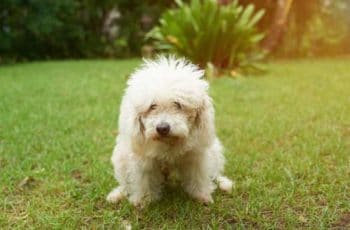
Finding your dog losing hair in patches and scabs can be upsetting. Before you panic, however, remember that alopecia, which is hair loss, in dogs is natural. It’s when you see abnormal skin under those hair clumps that you can worry.
If you see hair loss, first rule out simple causes. Does your dog’s collar or harness rub on an area that is now bald? Does your dog routinely struggle to slide under furniture or fences, thereby rubbing off hair? In these cases, hair loss is generally symmetrical and the skin itself is fine.
Seasonal Alopecia in Dogs
Dogs shed. It’s normal, and the skin underneath is healthy and ready to grow more hair. Natural causes for alopecia include:
- Routine seasonal sheds, when the coat turns over from season changes
- The dog’s coat changing from puppy coat to adult hair
- Coat “blowing” after a bitch has whelped and weaned her puppies
Some dogs will have minimal sheds, while others look like unkept dogs for a bit. Some dogs have what we call “pluckables,” which are clumps of free hair that are easily removed from the dog’s coat. A short-coated dog may just leave a bit of hair on your clothes or hand when you pet them. In these cases, the skin underneath should look normal, the coat overall is affected, and the hair will grow back.
Seasonal sheds/alopecia are affected by temperature and light, which influence the phases of hair growth. Some dogs lose hair faithfully every spring and fall, while others may only do so once a year. While there are products touted to help speed up or reduce shedding, the reality is that a good diet and regular grooming do as much good as any supplement when it comes to seasonal alopecia.
When to Worry About Dog Hair Loss
If the hair loss is patchy and accompanied by scabs, dandruff, inflamed areas, or obvious infection with pustules, seek veterinary help. “The most common cause of alopecia in dogs is trauma from scratching, chewing, pulling, or licking,” says William Miller Jr., VMD, emeritus professor of dermatology at Cornell University’s College of Veterinary Medicine.
The bare patches and scabs are secondary to chewing and itching. While some dogs are a bit secretive, most dogs will openly chew their own skin, making you aware you need to find the cause, such as folliculitis. Sebaceous adenitis is a disease of glands in the skin that can cause hair loss.
Dog Hair Loss and Parasites
Fleas and other external parasites lead the list for itchiness in dogs. With careful observation, you should be able to spot fleas. Look for scattering insects as you comb through your dog’s coat. You’ll usually find them around the tailhead or across the thinly haired area of the groin when your dog rolls over. Lice can be seen if you look carefully at hairs and spot the attached nits.
Mites are trickier. Sarcoptic mange mites stimulate severe pruritus but may be hard to find on skin scrapes. One anecdotal way to identify sarcoptic mange is to rub the edges of your dog’s ear together. If that sets off intense scratching, sarcoptic mange is a strong possibility. Demodectic mites are also found by skin scrapes.
Hair-Loss Diseases in Dogs
Once parasites are ruled out, finding the causes for hair loss becomes a bit more involved. Cultures for fungal infections like think ringworm may be recommended or an endocrine panel might be suggested. Endocrine panels might identify hypothyroidism. Some breeds have inherited alopecia conditions such as Alopecia X in Pomeranians, which causes hair loss and pigmentation of the skin.
Itching and scratching, of course, can also be due to allergies, such as from food that doesn’t agree with your dog.


